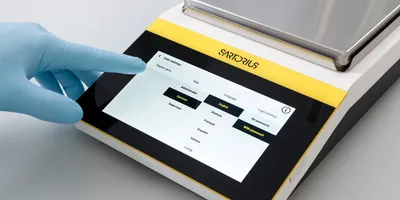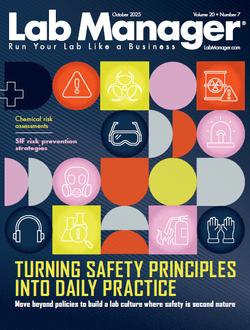Risk-Based Quality Management (RBQM) is a strategic approach in pharmaceutical manufacturing and clinical operations that emphasizes identifying, assessing, and managing risks to product quality and patient safety. Rooted in ICH Q9 and ICH Q10 guidelines, RBQM moves beyond reactive quality assurance to a proactive system that focuses resources where they are most needed based on risk.
By applying RBQM principles, pharmaceutical organizations can strengthen their quality systems, reduce inefficiencies, and ensure compliance with evolving global regulations. This method aligns with the industry's broader shift toward continuous improvement and lifecycle management.
What Is Risk-Based Quality Management?
Risk-Based Quality Management is a systematic process that integrates risk assessment into all aspects of quality oversight—from raw material selection to manufacturing, clinical trials, and distribution. The goal is to ensure product quality by anticipating issues, prioritizing risks, and directing efforts accordingly to areas where failure could pose the greatest impact.
Unlike traditional quality systems that treat all deviations or quality issues with equal urgency, RBQM focuses on those events with the highest potential to impact safety, efficacy, or regulatory compliance. It promotes a scientific and data-driven approach to decision-making, enabling smarter allocation of resources and earlier detection of potential problems.
For example, during a clinical trial, RBQM might prioritize oversight of data integrity at high-enrolling sites rather than equally monitoring all locations. In manufacturing, risk-based control might involve more frequent testing of high-risk raw materials, such as biological inputs prone to variability, while reducing testing frequency for low-risk excipients from validated suppliers. By doing so, organizations can improve efficiency without compromising quality or safety.
Risk Assessment Tools and Methodologies
Implementing RBQM relies on established tools and structured frameworks designed to systematically identify, evaluate, and mitigate quality-related risks across pharmaceutical processes. These tools support decision-making and resource allocation by helping teams focus on the most critical issues that could affect product quality, patient safety, or regulatory compliance. They are used throughout the product lifecycle—from development and clinical trials to manufacturing and distribution. Commonly used methods include:
- Failure Mode and Effects Analysis (FMEA): A systematic technique for identifying potential failure points in a process, their causes, and impacts. Used to prioritize areas for corrective actions.
- Hazard Analysis and Critical Control Points (HACCP): Originating in food safety, HACCP is now widely used in pharmaceuticals to pinpoint process steps critical to product quality.
- Ishikawa (Fishbone) Diagrams: Visual tool to explore cause-and-effect relationships related to quality issues.
- Risk Priority Number (RPN): Quantifies the level of risk using severity, occurrence, and detection scores, helping teams prioritize mitigation efforts.
- Pareto Analysis: Helps identify the most frequent or impactful issues contributing to quality risks, based on the 80/20 rule.
Implementation Strategies for RBQM

OpenAI (2025)
Successfully adopting Risk-Based Quality Management involves cross-functional collaboration, cultural adaptation, and robust change control. Key strategies include:
1. Leadership Engagement and Culture Building
Senior management must actively promote a culture that values risk transparency, continuous improvement, and data-driven decision-making. Leadership should set the tone by clearly communicating RBQM principles and integrating them into company values and performance metrics. For example, senior leaders might participate in regular risk review meetings or sponsor risk management training initiatives across departments. Quality must be positioned as a shared responsibility, not siloed within the QA function.
2. Process Mapping and Risk Identification
Organizations should conduct detailed mapping of critical processes in manufacturing, clinical trials, and R&D to uncover points of vulnerability. This involves collaborating with stakeholders across operations, quality, regulatory, and engineering to document workflows, identify failure points, and assess potential impact. For example, in a sterile drug manufacturing process, mapping might reveal that environmental monitoring during aseptic filling is a critical control point due to the risk of microbial contamination.
3. Training and Competency Development
Effective RBQM implementation depends on knowledgeable and competent personnel. Training programs should be tailored to specific job roles, covering use of risk tools (e.g., FMEA), interpretation of quality data, and relevant regulatory guidance. Case studies and simulation-based training can reinforce how to apply risk thinking in real scenarios. Refresher training should be conducted periodically to keep skills current and to introduce updates in tools or processes.
4. Integration with Quality Systems
RBQM should be embedded into existing quality systems, such as CAPA, change control, deviation management, and audit programs. Risk ratings can be assigned to deviations to determine the depth of investigation required, or to prioritize corrective actions. For example, change control procedures can include a formal risk assessment step using a Risk Priority Number (RPN) to determine approval pathways. Quality management software can be used to automate risk scoring and trend analysis.
Lab Quality Management Certificate
The Lab Quality Management certificate is more than training—it’s a professional advantage.
Gain critical skills and IACET-approved CEUs that make a measurable difference.
5. Performance Monitoring and Feedback Loops
Establish Key Performance Indicators (KPIs) that directly track risk mitigation efforts and quality performance outcomes. Examples include the number of high-risk deviations, cycle time for CAPA closure, and audit findings linked to risk-ranked areas. Regular trend reviews allow teams to refine risk controls based on emerging issues and effectiveness checks. Feedback loops should be built into governance processes to ensure that lessons learned are incorporated into future risk assessments and quality planning.
Regulatory Alignment and Guidance
Global regulatory authorities advocate for risk-based approaches to quality management. Key frameworks include:
- ICH Q9: Quality Risk Management: Provides principles and examples of tools for quality risk assessment and management.
- ICH Q10: Pharmaceutical Quality System: Encourages integration of RBQM into the overall quality system, emphasizing process performance and product quality.
- FDA Guidance on Quality Systems: Supports use of risk management in design, development, manufacturing, and control of drug products.
- EMA Reflection Papers and GCP E6(R2): Encourage use of RBQM in clinical trials for better data integrity and patient protection.
Agencies expect documented risk rationales, evidence-based mitigation strategies, and continuous improvement plans as part of inspections and submissions.
Final Thoughts
Risk-Based Quality Management (RBQM) empowers pharmaceutical organizations to proactively address quality challenges by focusing on what matters most. By leveraging structured risk tools, aligning with global guidelines, and fostering a culture of shared responsibility, companies can enhance compliance, reduce waste, and ultimately protect patient safety.
RBQM is not just a regulatory requirement—it is a modern quality philosophy that enables smarter, safer, and more sustainable pharmaceutical operations.












